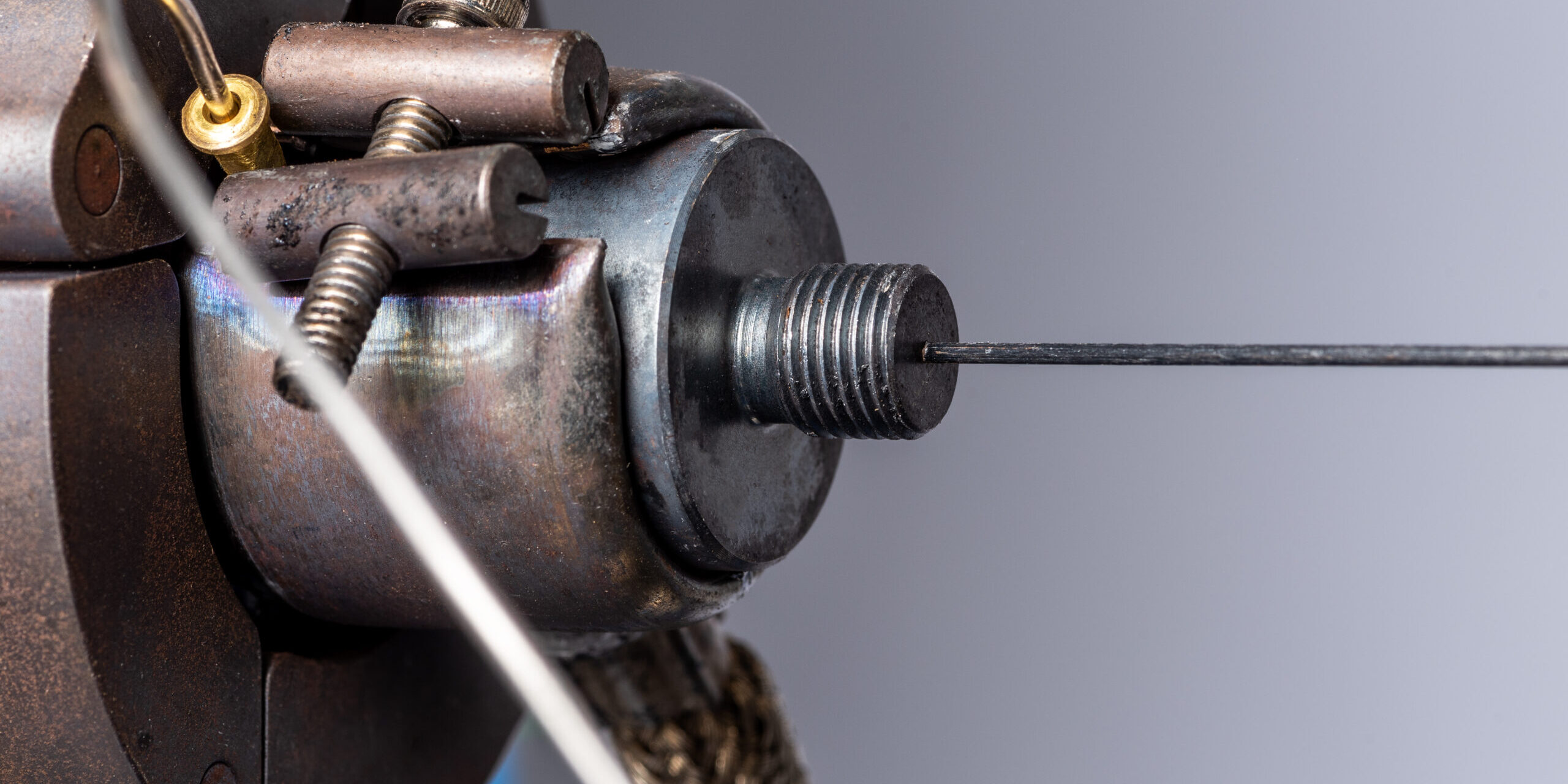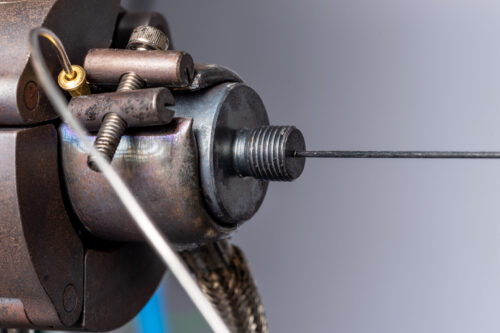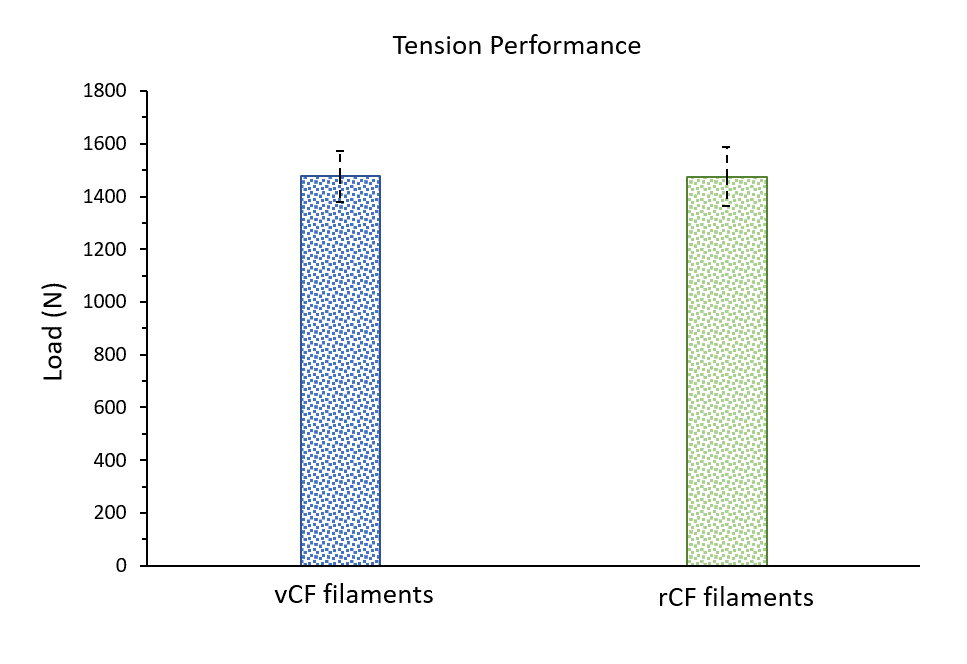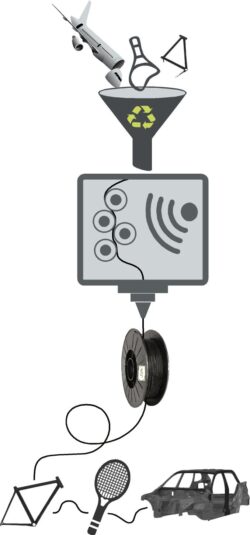Carbon fibre reinforced plastics (CFRP) are used to reduce fuel consumption in aviation domain by reducing weight. But the fibre production is a high energy intensive process. Recycling of the fibres enables an extended usage of carbon fibres even beyond the first life cycle. This leads to a lower strain on the energy intensive production process, thus lowering the demand for new fibres.
At the end of its service life CFRP material is still valuable and should not be disposed of via landfill. This is prevented by an EU landfill ban for composites (see EU 1999/31/EC). The process presented in this article addresses the need for processes that preserve as much value as possible for the next life cycle of the material. In aviation in particular, there is an opportunity to convert load-bearing structures such as stringers and frames (primary structures) into (non-load-bearing) secondary structures at the end of their service life by means of recycling. Aircraft interiors and non-structural components can be suited for this purpose.
In view of the forecasted annual growth rates for CFRP of around 11.7 %, there is a pressing need for suitable recycling processes. The efficiency pressure to reduce consumption and thus weight will foreseeably increase the demand for lightweight construction (materials) in all areas of mobility. Every year, around 10,000 tons of production waste are generated in Europe, of which 3,000 to 5,000 tons are produced in Germany alone. The most mature method is currently mechanical recycling (70 % market share in 2023) which produces short carbon fibres and integrates them into products.
Thanks to their good mechanical properties, carbon fibres coming from production waste (rCF) offer a wide range of possible applications. In particular, when they are efficiently impregnated to produce filaments, new high‑quality semi-finished products could be created that almost entirely preserve the value of the fibers. When recycled carbon fibres are used in filaments (wire-like material of unlimited length, e.g. for 3D printing), even greater design freedom is achieved than with drapable material made from newly produced carbon fibres (vCF – virgin carbon fibre). The examples described in the literature range from complex designs in the aerospace and automotive industries to the sporting goods sector and medical technology. The aerospace industry is the largest consumer of virgin carbon fibres (vCF) and later producer of end-of-life components (EoL components at the end of their primary service life). Thus becoming a supplier of carbon fibres coming from waste streams for the aforementioned industries.
With the use of recycled carbon fibres as replacement for its virgin counterparts especially in the non-structural parts, within the aerospace industry, cost can be reduced and the life cycle balance improved. In the same way, recycled carbon fibres in automotive components can lead to weight savings and reduce fuel consumption. (e.g. in the windscreen frame of a BMW iX cars).
The Process
DLR has developed an additive manufacturing process for high-quality, continuously reinforced filaments with high performance aerospace grade thermoplastics (e.g. Polyphenylene sulfide, PPS, see Figure 1). This production line has been adapted to enable a continuous processing of recycled materials that typically have a lower tensile strength compared to virgin carbon fibres. The modified impregnation line minimizes the risk of fibre breakage that would lead to process interruption. Various types of recycled fibres (coming from production waste and/or ageing stock) are currently being investigated with regard to their processing requirements. DLR’s ENDLOS Effekt process uses ultrasonic impregnation technology to produce filaments (consisting of 12,0000 individual fibres, ) with 50 % fibre volume content which has a prominent industrial demand. Since this in-house process offers the possibility of using virgin and recycled fibres as reinforcements a direct comparison could show that there is only limited loss of properties.
The successfully demonstrated process allows recycled carbon fibres (rCF) that previously could not be used for products due to degradation, impurities, etc. to be used. This is a promising step towards demonstrating applicability of rCF as reinforcements. Work is currently underway to expand the process for additional fibre qualities in order to obtain recycled material based semi-finished products accordingly.
Outlook
Novel high-quality recycling and processing methods are limiting downcycling whilst creating the basis for new semi-finished products and components possibly at comparable applicability. These contribute to the conservation of resources by increasingly closing recycling loops. This will be further accelerated by the upcoming legal requirements for the recyclability of products. Figure 3 shows an idealised material flow as it is presented here and could be in the future.
Another trend is the more frequent use of thermoplastic matrices, which facilitates the recycling of fibres. At the same time replacing virgin carbon fibres with rCF-based materials reduces the costs of lightweight composite structures. This will further boost the market for lightweight materials and increase the number of possible applications for rCF materials in the automotive industry, for example. Ultimately, positive application experiences will be decisive for the introduction of new material solutions such as rCF products.
This will contribute to research in manufacturing processes that can reliably process different recyclates and help to strengthen confidence in circular economy. This should preferably be done in close cooperation with the recyclate manufacturers in order to guarantee assured qualities and contribute to the further standardisation and establishment of rCF, e.g. by means of certification. In this context, reliable simulation methods can also help to reduce industry reservations about the use of recycled carbon fibres in new products.










